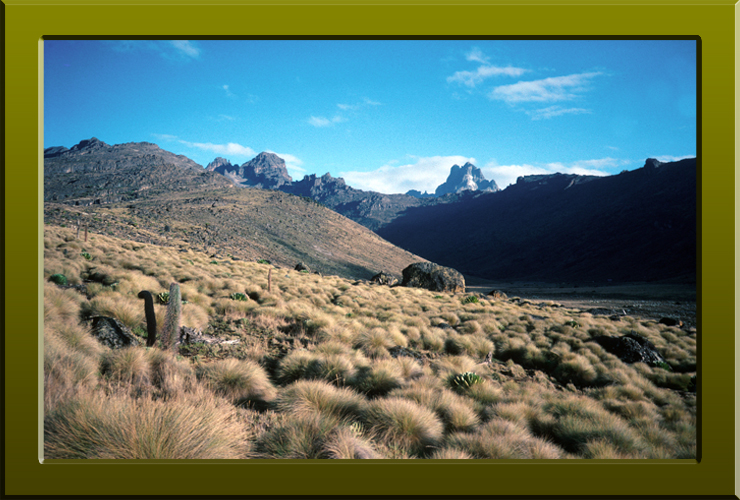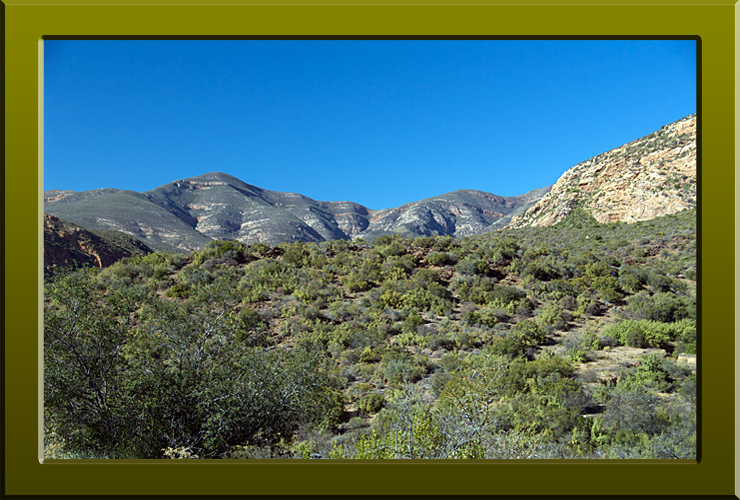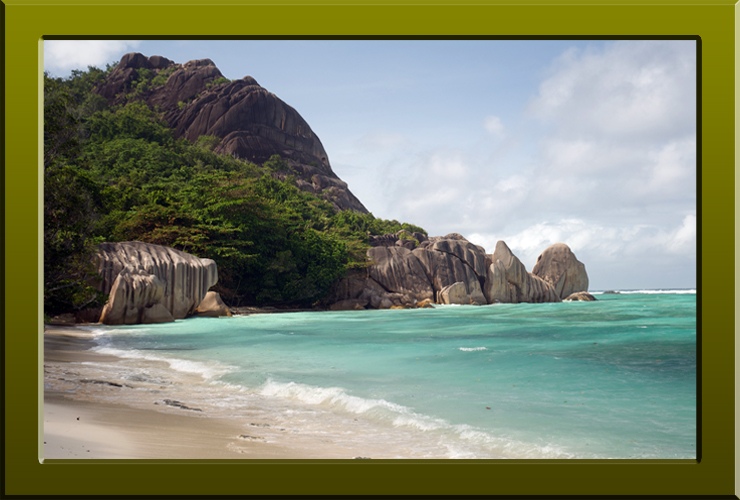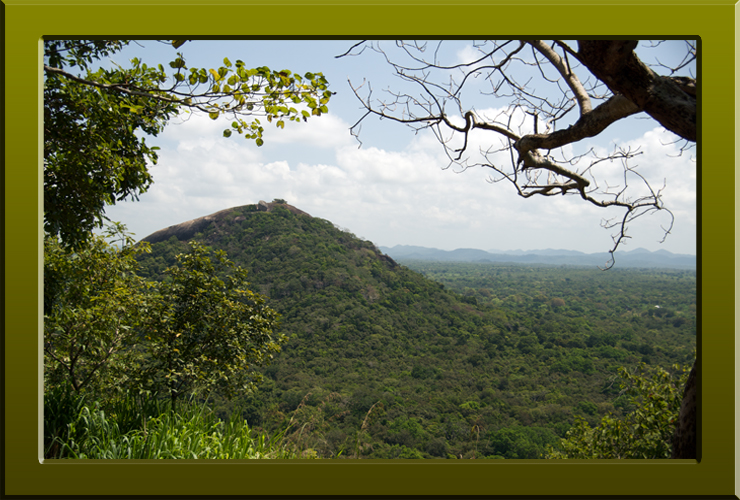Paleotropic Biokingdom
With the exception of Australia, this BioKingdom includes all of the tropical habitats of the Old World, and all of the tropical islands of the Pacific Ocean apart from the Galapagos Islands. The plant life comprises some 40 endemic families of vascular plants. The following thirteen bioregions are recognised.
Guineo-Congolian BioRegion
The Guineo-Congolian BioRegion encompasses the humid tropical parts of West and Central Africa extending from Senegal to western Kenya and northern Angola and including the Congo River Basin. Although the rain forests are generally less diverse than those of the Neotropics and Indo-Malaysia, they are estimated to house more than half of Africa’s species and about 8000 plant species, four-fifths of which are endemic. There are thought to be some ten endemic plant families including Dioncophyllaceae, Hoplestigmataceae, Huaceae, Medusandraceae, Scytopetalaceae and a multitude of endemic genera especially centred around Cameroon and Gabon. Within this BioRegion the following three bioprovinces are recognised:
| Upper Guinea | Nigerian-Cameroonian | Congolian |
Uzambara-Zululand BioRegion
This relatively narrow BioRegion comprises the eastern coastal strip of Africa extending from southeastern parts of Somalia southwards to the vicinity of Port Elizabeth in South Africa’s Eastern Cape. There are two endemic plant families (Rhynchocalycaceae and Stangeriaceae) and about 20 endemic genera. Specific endemism is thought to be in the the region of 40%. Within this BioRegion the following two bioprovinces are recognised:
| Zanzibar-Inhambane | Tongoland-Pondoland |
Sudano-Zambezian BioRegion
This massive BioRegion stretches from the Atlantic coast of Mauritania, Senegal and northeastern Guinea to and including most the Sudan Republic together with northeastern and eastern tropical Africa. It also comprises the tropical parts of the Arabian Peninsula, the tropical deserts of Iran, Pakistan and northwestern India and the mysterious island of Socotra. Within this BioRegion the following nine bioprovinces are recognised:
| Zambezian | Sahelian | Sudanian | Somalo-Ethiopian | South Arabian |
| Socotran | Omanian | South Iranian | Sindian |

Mount Kenya's afroalpine vegetation in the Somalo-Ethiopian BioProvince of the Sudano-Zambezian BioRegion (Copyright © 2010 Barbara Jones)
Karoo-Namib BioRegion
Comprising the deserts and semideserts of southwestern parts of southern Africa this BioRegion is very distinct with a high level of endemism. This is thought to reflect the great antiquity of the area. However, despite the fact that over 80 endemic genera have been recorded there is only one endemic family (Welwitschiaceae). Within this BioRegion the following four bioprovinces are recognised:
| Namibian | Namaland | Western Cape | Karoo |

Little Karoo (Black Mountains) in the Western Cape BioProvince of the Karoo-Namib BioRegion (Copyright © 2010 Peter Martin Rhind)
St Helena and Ascension BioRegion
This BioRegion comprises the two small South Atlantic volcanic islands of St Helena and Ascension. Despite their small size they are considered to be sufficiently distinct to have bioregion status. Their biodiversity is not particularly high but there are 10 endemic genera. In the past the area has been divided into two BioProvinces – the Ascension Island BioProvince and the St Helena BioProvince but here that level of differentiation is not considered to be justified. The following bioprovince is recognised:
| St Helena and Ascension |
Madagascan BioRegion
Included here is Madagascar, the Aldabra islands, the Seychelles, the Amirante Islands, the Mascarene Islands and the Comora Islands. The area has an exceptionally high level of endemism including 12 endemic plant families (Asteropeiaceae, Barbeuiaceae, Didiereaceae, Didymelaceae, Diegodendraceae, Geosiridaceae, Medusagynaceae, Physenaceae, Psiloxylaceae, Rousseaceae, Sarcolaenaceae and Sphaerosepalaceae) and about 400 endemic genera. There are an estimated 10,000 species of flowering plants and about 80% of these are endemic. Within this BioRegion the following six bioprovinces are recognised:
| Eastern Madagascan | Western Madagascan | Southern and Southwestern Madagascan | Comoran | Mascarenean | Seychellean |

Coastal forest in the Seychellean BioProvince of the Madagascan BioRegion (Copyright © 2010 Peter Martin Rhind)
Indian BioRegion
Amost all of South Asia (Indostan) is included here and comprises much of the Deccan Peninsula, the Gangetic Plain, the tropical foothills of the Himalayas, Sri Lanka, the Laccadive Islands, the Maldive Islands and the Chagos Archipelago. The flora is very rich with about 120 endemic genera but there are no endemic families. Within this BioRegion the following five bioprovinces are recognised:
| Sri Lankan | Malabar | Deccan | Upper Gangetic | Bengalian |

Jungle in the dry lowlands of the Sri Lankan BioProvince near Sigiriya (Copyright © 2010 Peter Martin Rhind)
Indochinese BioRegion
Included here is most of Indochina, Burma and Thailand, tropical parts of southwestern and southern China and the island of Hainan and the Andaman Islands. The flora is extremely diverse with some 250 endemic genera but only one endemic family (Plagiopteraceae). Within this BioRegion the following seven bioprovinces are recognised:
| South Myanmar | Andamanese | South Chinese | Thailandian |
| North Indochinese | Annamese | South Indochinese |
Malesian BioRegion
This large BioRegion includes the entire Malesian Archipelago (the Greater and Lesser Sunda Islands, the Philippines and the Moluccas), New Guinea, the Aru Islands, the Admiralty Islands, the Solomon Islands, Bismarck and Louisiade archipelagos, and southern part of the Malay Peninsula. The rich flora comprises some 25,000 flowering plants and there are four endemic plant families (Duabangaceae, Lophopyxidaceae, Matoniaceae and Scyphostegiaceae). Within this BioRegion the following nine bioprovinces are recognised:
| Malayan | Bornean | Philippinean | Sumatran | South Malesian |
| Sulawesian | Maluku | Papuan | Bismarckian |

Mount Kinabalu in the Bornean BioProvince of the Paleotropic BioKingdom (Copyright © 2010 Peter Martin Rhind)
Fijian BioRegion
In addition to the Fiji Islands this BioRegion includes the Vanuatu Islands (New Hebrides), the Santa Cruz Islands, the Rotuma Islands, the Wallis Islands, the Horn Islands and Niue Island. The flora includes twelve endemic genera and one endemic family (Degeneriaceae). Within this BioRegion the following two bioprovinces are recognised:
| Vanuatu | Fijian |
Polynesian BioRegion
This multi-island BioRegion includes the Caroline Islands, the Mariana Islands, Marcus Island, Wake Island, the Marshall Islands, Nauru Islands, Banaba Island, the Gilbert Islands, Howland Island, Baker Island, the Ellice Islands, the Phoenix Islands, the Tokelau Islands, the Line Islands, the Cook Islands, the Society Islands, the Tabuai Islands, Rapa Island, the Tuamotu Archipelago, the Marquesas Islands, the Mangareva Islands, Pitcairn Island, Henderson Island, Ducie Island, Easter Island and Sala-Y-Gomez. There are about ten endemic or near endemic plant genera but no endemic families. Within this BioRegion the following two bioprovinces are recognised:
| Micronesian | Polynesian |
Hawaiian BioRegion
This the most isolated floristic region in the world comprises the Hawaiian Islands and Johnston Atoll. Not surprisingly the flora is characterised by exceptionally high levels of generic and species endemism but there does not appear to be any endemic plant families. The total number of plant genera is relatively low amounting to about 230 but over 35 of these are endemic. Within this BioRegion the following bioprovince is recognised:
| Hawaiian |
Neocaledonian BioRegion
In addition to New Caledonia, this BioRegion includes the Loyalty Islands and the Isle of Pines. The flora is very distinctive comprising several endemic families (Amborellaceae, Austrotaxaceae, Oncothecaceae, Paracryphiaceae, Phellinaceae, Strasburgeriaceae and Stromatopteridaceae) and about 130 endemic genera. No other area of comparable size on earth supports so many endemic plant families and genera and many of the genera are considered to be archaic. The following bioprovince is recognised:
| Neocaledonian |









